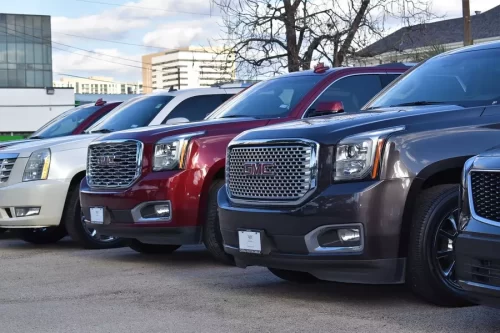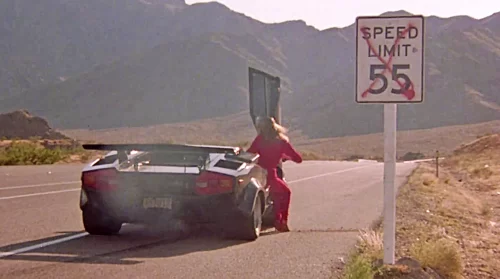
FAST FACTS Vol. 1, Issue 3 – Smokey & The Bandit – Smoking Hot!
1977 Pontiac Trans Am ENGINE SPECS for the “Screaming Chicken” Car: 6.6 Liter, V8 water-cooled, cast-iron block and heads, 5 main bearings Displacement: 400 cubic-inches
Welcome to Part 2 of Fraser Engine Co’s three-part series on knowing when it’s time to replace your engine or your whole car. We want this in-depth feature to help you make an informed decision before you choose to buy a remanufactured engine from us.
Last week we addressed the financial and emotional considerations of this kind of decision.
This week we will outline the bonafide tell-tale signs that your engine is nearing its end of life.
And in our final installment, we will take you step-by-step through Fraser’s engine selection process, what our warranty does and does not cover, and how you should get the engine installed.
 Your car is getting a bit older. Maybe you don’t take care of it as you should, for instance not changing the oil that frequently. And now, something seems odd. You can’t figure it out, but you know something is wrong. Look to these signs for a more serious problem:
Your car is getting a bit older. Maybe you don’t take care of it as you should, for instance not changing the oil that frequently. And now, something seems odd. You can’t figure it out, but you know something is wrong. Look to these signs for a more serious problem:
All of these signs could be minor, but in the majority of cases, they are indicators that your engine is suffering. If any qualified mechanic says it’s time for a new engine, you need to read Part 1 of this series and check in next week for Part 3.
DISCLAIMER: The following emergency procedures are offered with no warranties or guarantees, express or implied, and are solely for the purpose of informing our readers of safe options in the case of a catastrophic engine failure.
If your engine fails while you’re driving, keep your eyes on the road at all times, and put your emergency flashers on. DO NOT LOOK AT OR DIAL YOUR CELL PHONE AT THIS TIME. Expect your steering and braking to get harder, as these are powered by the engine that is now stopped. Look for a safe place to pull over. If you are in fast-moving traffic, roll down your windows and honk your horn repeatedly. When you come to a stop, if you are not on the side of the road, remain in your car, seatbelts buckled, and leave the ignition in the on position, so your horn and lights have power. If you have a cell phone, now is the time to call 911.
DO NOT, under any circumstance, open your doors if traffic is moving around both sides of your vehicle.
Continue to honk your horn, preferably in an SOS pattern, three short honks, three long honks, and three short honks again, then pause and repeat until professional help arrives.
If you are in the lane of traffic that is immediately adjacent to the center median on the driver’s side, and you fear for your life, exit the car ONLY on the driver’s side, and walk along the center median waiving your hands above your head, in single file, in the direction of oncoming traffic, leaving the back of your car behind you. (Waving your hands makes you more visible to oncoming motorists. Walking away from the back of your car protects you in the event of a collision with your vehicle.) When you are at least four car lengths behind your car, and you have a cell phone, cal 911.
If you are in the lane of traffic where your passenger’s side is next to the shoulder, you should exit the car ONLY on the passenger’s side, and move as far away from your car, and traffic, while also moving towards oncoming traffic until you are well clear of any possible accident. Now is the time to call 911.
In the final installment (Part 3) of this series, we will walk you through making the decision about whether to replace the engine or the whole car. We will also detail Fraser Engine Co.’s engine selection process; why professional installation is critical; and what our warranties do and don’t cover.

1977 Pontiac Trans Am ENGINE SPECS for the “Screaming Chicken” Car: 6.6 Liter, V8 water-cooled, cast-iron block and heads, 5 main bearings Displacement: 400 cubic-inches

Mopar OEM Chrysler 5.7L Crate Engine (2013-2018) Mopar OEM Chrysler 5.7L Crate Engine (2013-2016) 7 Year FRASER PLUS™ Warranty Included $ 4499 00 CORE DEPOSIT

Issue 36 • Engine & Transmission Tips Renowned as GM’s best overall compact engine, and Fraser’s strongest remanufactured engine. An introduction to the GM

The Real Outlawed Car Race That Inspired A Real Tribute Movie America’s secret illegal grand prix turned into a hit film Best friends set off

Ford’s EcoBoost engines have gained immense popularity for their performance and fuel efficiency blend. For enthusiasts seeking to unlock the full potential of their Ford

Where The Way-Back Seat Meets The Road! A Tribute To Station Wagons & Their Kid-Magnet Way Back Seat A Tribute To Those Great-American Station Wagons